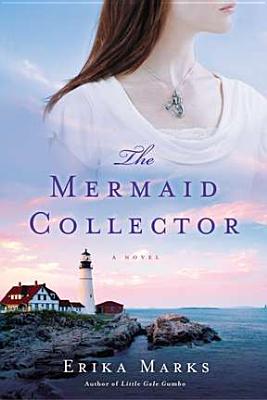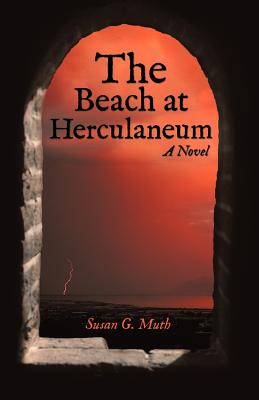When your Internet cable leaves your living room, where does it
go? Almost everything about our day-to-day lives—and the broader scheme
of human culture—can be found on the Internet. But what is it
physically? And where is it really? Our mental map of the network is as
blank as the map of the ocean that Columbus carried on his first
Atlantic voyage. The Internet, its material nuts and bolts, is an
unexplored territory. Until now.
In
Tubes, journalist Andrew Blum goes inside the Internet's
physical infrastructure and flips on the lights, revealing an utterly
fresh look at the online world we think we know. It is a shockingly
tactile realm of unmarked compounds, populated by a special caste of
engineer who pieces together our networks by hand; where glass fibers
pulse with light and creaky telegraph buildings, tortuously rewired,
become communication hubs once again. From the room in Los Angeles where
the Internet first flickered to life to the caverns beneath Manhattan
where new fiber-optic cable is buried; from the coast of Portugal, where
a ten-thousand-mile undersea cable just two thumbs wide connects Europe
and Africa, to the wilds of the Pacific Northwest, where Google,
Microsoft, and Facebook have built monumental data centers—Blum
chronicles the dramatic story of the Internet's development, explains
how it all works, and takes the first-ever in-depth look inside its
hidden monuments.
This is a book about real places on the map: their sounds and smells,
their storied pasts, their physical details, and the people who live
there. For all the talk of the "placelessness" of our digital age, the
Internet is as fixed in real, physical spaces as the railroad or
telephone. You can map it and touch it, and you can visit it. Is the
Internet in fact "a series of tubes" as Ted Stevens, the late senator
from Alaska, once famously described it? How can we know the Internet's
possibilities if we don't know its parts?
Like Tracy Kidder's classic
The Soul of a New Machine or Tom Vanderbilt's recent bestseller
Traffic,
Tubes
combines on-the-ground reporting and lucid explanation into an
engaging, mind-bending narrative to help us understand the physical
world that underlies our digital lives.
The critically acclaimed author of
Russian Winter turns her "sure and suspenseful artistry" (
Boston Globe) to the lives of three colleagues and lovers in the world of classical music.
On a Boston street one warm spring day, Hazel and Remy spot each other
for the first time in years. Although their brief meeting may seem
insignificant, behind them lie two decades in which their life paths
have crisscrossed, diverged, and ultimately interlaced. Remy, a gifted
violinist, is married to the composer Nicholas Elko—once the love of
Hazel's life.
It has been twenty years since Remy, an ambitious conservatory student;
Nicholas, a wunderkind launching an international career; and his wife,
the beautiful and fragile Hazel, first came together, tipping their
collective world on its axis. As their story unfolds from 1987 to 2007,
from Europe to America, from conservatory life to the Boston Symphony
Orchestra, each discovers the surprising ways in which the quest to
create something real and true—be it a work of art or one's own life—can
lead to the most personal of revelations.
Lyrical and evocative,
Sight Reading explores the role of art
and beauty in everyday life, while unspooling a transporting story of
marriage, family, and the secrets we keep, even from ourselves.
Jimmy Connors is a working-man's hero, a people's champion who could
tear the cover off a tennis ball, just as he tore the cover off the
country-club gentility of his sport. A renegade from the wrong side of
the tracks, Connors broke the rules with a radically aggressive style of
play and bad-boy antics that turned his matches into prizefights. In
1974 alone, he won 95 out of 99 matches, all of them while wearing the
same white shorts he washed in the sink of his hotel bathrooms. Though
he lived the rock star life away from tennis, his enduring dedication to
his craft earned him eight Grand Slam singles titles and kept him among
the top ten best players in the world for sixteen straight years—five
at number one.
In
The Outsider, Connors tells the complete, uncensored story
of his life and career, setting the record straight about his formidable
mother, Gloria; his very public romance with America's sweetheart Chris
Evert; his famous opponents, including Björn Borg, John McEnroe, Arthur
Ashe, Ivan Lendl, and Rod Laver; his irrepressible co-conspirators Ilie
Nastase and Vitas Gerulaitis; and his young nemesis Andre Agassi.
Connors reveals how his issues with obsessive-compulsive disorder,
dyslexia, gambling, and women at various times threatened to derail his
career and his long-lasting marriage to
Playboy Playmate Patti McGuire.
Presiding over an era that saw tennis attract a new breed of passionate
fans—from cops to tycoons—Connors transformed the game forever with his
two-handed backhand, his two-fisted lifestyle, and his epic rivalries.
The Outsider is a grand slam of a memoir written by a man once again at the top of his game—as feisty, unvarnished, and defiant
as ever.
Jessica Anya Blau, author of
The Summer of Naked Swim Parties, delivers another darkly hilarious, heartbreaking coming-of-age novel with
The Wonder Bread Summer.
In
The Wonder Bread Summer, loosely based on
Alice in Wonderland, 20-year-old Allie Dodgson has adventures that rival those Alice had down the rabbit hole. Or those of Weeds’ Nancy Botwin.
Allison is working at a dress shop to help pay for college. The dress
shop turns out to be a front for drug dealers. And Allison ends up on
the run—with a Wonder Bread bag full of cocaine.
With a hit man after her, Allison wants the help of her parents. But
there’s a problem: Her mom took off when Allison was eight; her dad
moves so often Allison that doesn’t even have his phone number….
Set in 1980s California,
The Wonder Bread Summer is a wickedly funny and fresh caper that’s sure to please fans of Christopher Moore, Carl Hiaasen, and Marcy Dermansky.
A Far Piece to Canaan is a warm and nostalgic novel from an unexpected source: Sam Halpern, whose salty paternal wisdom made Justin Halpern’s
Sh*t My Dad Says a phenomenal bestseller.
Inspired by Sam Halpern’s childhood in rural Kentucky,
A Far Piece to Canaan
tells the story of Samuel Zelinsky, a celebrated but troubled former
professor who reluctantly returns after his wife’s death to the Kentucky
hills where he lived as a child to reconnect with long-buried memories
and make good on a forgotten promise.
In 1945, Sam and his best friend, Fred Mulligan, visit the Blue Hole, a
legendary pool on the Kentucky River where the hill people believe an
evil force lurks. Along with a couple of neighbor boys, they discover
the body of a dog, surrounded by twisted human footprints—and a cave
that offers further evidence that something terrible has transpired.
Fearing they'll be punished for their trespasses, the boys initiate a
series of cover-ups and lies that eventually leads to a community
disaster.
When the Zelinskys move, Fred and Samuel promise each other that if
either calls, the other will come to his aid. But Samuel's failure to
keep his promise has lasting consequences he could never have predicted.
Now, decades later, he confronts his failures and attempts to redeem
himself, finally achieving peace through his late return to Canaan land.
A tale of superstition, secrets, and heroism in the postwar South,
A Far Piece to Canaan: A Novel of Friendship and Redemption is the surprising and moving debut of a gifted storyteller.
The Food Network star is back with an all-new,
all-American book in his #1 New York Times bestselling series
In its seventeenth season, Guy Fieri's
Diners, Drive-ins and Dives continues its reign as America's best source for finding the funky, scratch-made, and delicious. Now the host and #1
New York Times bestselling author returns with more of his favorite joints across the country—and a few in Canada! In this third entry in his
Diners, Drive-ins and Dives: The Funky Finds in Flavortown
series, Guy keeps his motto front and center—"If it's funky, I'll find
it." This time around he's bringing on the big personalities, the
rockin' real-deal recipes, and the homegrown restaurants that capture
the freewheeling American spirit at its finest.
Also along for the ride are members of Guy's rambunctious Krew, sharing
their most memorable shoots, meals, behind-the-scenes stories, and
killer pranks from the road. And check out this new feature—a
tricked-out, full-color foldout map that shows the location of every
diner in the book!
























































